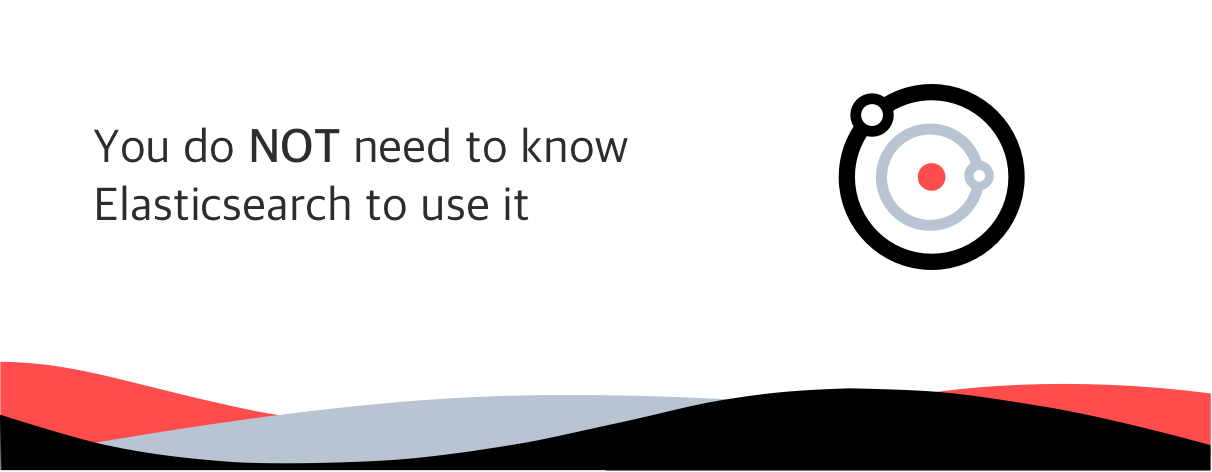High level properties
For every problem out there, there exist many solutions. Not all solutions are the same.
And not everybody likes the same solutions.
Look around how many programming languages exist, and how each of them has advantages and disadvantages.
So it’s always worth it to create something that already exists.
The important thing is to do it differently, and add your own perspective to it.
With this in mind, I created the Sigmie PHP library that takes a different approach to Elasticsearch.
This solution uses 20 percent of the Elasticsearch features but fits in 80 percent of the world scenarios.
It’s made for companies and developers that don’t have enough time to invest in Elasticsearch, but still want a decent Search.
To use it you don’t need any Elasticsearch knowledge at all. You only need an Elasticsearch server running somewhere.
Let me show you some features.
You don’t need to know Elasticsearch
So simple.
Easy to get started
You can start searching with 3 lines of code. Let me show you.
Let’s assume that you have a users table in your database and you want to make your users searchable.
The first step is to add your users to a search index called users.
$users = $users->map(fn($user) => $user->toArray()); $sigmie->collect(index:'users')->merge($users);with this two lines we our $users to a search index. Now we are ready to search for them.
Now let’s assume that in our UI we have a text input where our user searches for john.
$query = $request->get('query'); // john $response = $sigmie->newSearch('users')->fields(['name', 'email'])->queryString($query)->get(); $result = $response->json();With the above lines, we search the users index if the name or the email attribute contains
the string john.
Here is and example how the JSON response may look like:
{ "took": 2, // "hits": { // "hits": [ { "_index": "636cf7730ba43_20221110130659053736", "_type": "_doc", "_id": "mA6mYYQBxEY4zeoFmp4P", "_score": 0.9808291, "_source": { "id": "93", "name": "John Doe", "active": true } } ] }}Now we can use the results to show the found users.
In this example we used the most minimal settings to quickly make our users searchable and start searching them.
Let’s have a look on some options.
Creating an Index
In the first example, the Search Index is created as soon as we add our first user. But we can also first create
an Index with some configurations and add the $users afterward.
$sigmie->newIndex('users')->create(); $sigmie->collect('users')->merge($users);This way you can add stopwords, synonyms, define an index language or even strip HTML.
Here’s an example how you can add some stopwords.
$sigmie->newIndex('books') ->stopwords(['and','but']) ->create();Calling the stopwords method instructuts the Index to ignore the words and and but when searching.
There are plenty of methods available to create an index specific to our needs.
Searching
There are also more methods for searching.
For example we can specify which attributes can handle some typos.
$response = $sigmie->newSearch('books') ->fields(['name', 'author']) ->typoTolerantAttributes(['name']) ->queryString($query) ->get();Using the typoTolerantAttributes method above we say that we tolerate some typos in the name attribute.
And another example where we search for all published books and we sort them by name.
$response = $sigmie->newSearch('books') ->filter('is:published') ->sort('name:asc') ->queryString($query) ->get();Think of an Indices as a collections.
Bellow are some examples of what you can do.
Iterate on big indices
$sigmie->collect('books') ->chunk(500) ->each(function($document)=>{ // do something });Add a document
use Document\Document; $sigmie->collect('movies')->add(new Document(['name'=> 'Spider Man 3']));Get the document count
$index = $sigmie->collect('movies'); count($index); // 200Remove all documents
$index = $sigmie->collect('movies'); count($index); // 200 $index->clear(); count($index); // 0Check that a document exists
$sigmie->collect('movies')->has('mA6mYYQBxEY4zeoFmp4P');Some words
The goal of this post was to give you an idea of what we made possible with our implementation and also to show how Sigmie differs from the traditional Elasticsearch libraries out there.
All this is available in the sigmie/sigmie package, and will also exist in the sigmie/elasticsearch-scout once it’s released.
